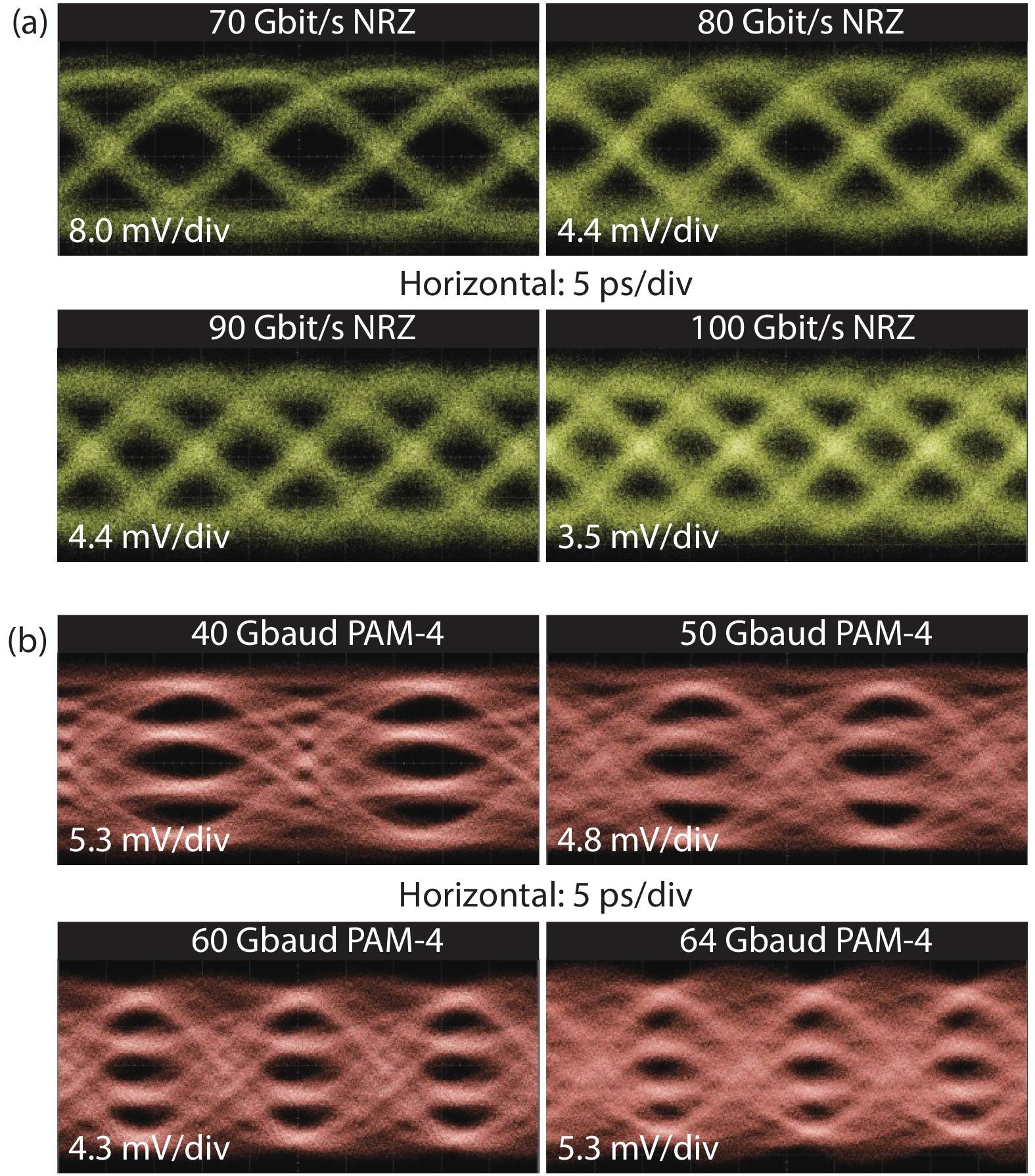| Citation: |
Dingyi Wu, Xiao Hu, Weizhong Li, Daigao Chen, Lei Wang, Xi Xiao. 62 GHz germanium photodetector with inductive gain peaking electrode for photonic receiving beyond 100 Gbaud[J]. Journal of Semiconductors, 2021, 42(2): 020502. doi: 10.1088/1674-4926/42/2/020502
****
D Y Wu, X Hu, W Z Li, D G Chen, L Wang, X Xiao, 62 GHz germanium photodetector with inductive gain peaking electrode for photonic receiving beyond 100 Gbaud[J]. J. Semicond., 2021, 42(2): 020502. doi: 10.1088/1674-4926/42/2/020502.
|
62 GHz germanium photodetector with inductive gain peaking electrode for photonic receiving beyond 100 Gbaud
DOI: 10.1088/1674-4926/42/2/020502
More Information
-
References
[1] Soref R A. Silicon-based optoelectronics. Proc IEEE, 1993, 81, 1687 doi: 10.1109/5.248958[2] Miller D A B. Device requirements for optical interconnects to silicon chips. Proc IEEE, 2009, 97, 1166 doi: 10.1109/JPROC.2009.2014298[3] Asghari M, Krishnamoorthy A V. Energy-efficient communication. Nat Photonics, 2011, 5, 268 doi: 10.1038/nphoton.2011.68[4] Thomson D, Zilkie A, Bowers J E, et al. Roadmap on silicon photonics. J Opt, 2016, 18, 073003 doi: 10.1088/2040-8978/18/7/073003[5] Yamada K, Tsuchizawa T, Nishi H, et al. High-performance silicon photonics technology for telecommunications applications. Sci Technol Adv Mater, 2014, 15, 024603 doi: 10.1088/1468-6996/15/2/024603[6] Gould M, Baehr-Jones T, Ding R, et al. Bandwidth enhancement of waveguide-coupled photodetectors with inductive gain peaking. Opt Express, 2012, 20, 7101 doi: 10.1364/OE.20.007101[7] Novack A, Gould M, Yang Y, et al. Germanium photodetector with 60 GHz bandwidth using inductive gain peaking. Opt Express, 2013, 21, 28387 doi: 10.1364/OE.21.028387[8] Chen G, Yu Y, Deng S, et al. Bandwidth improvement for germanium photodetector using wire bonding technology. Opt Express, 2015, 23, 25700 doi: 10.1364/OE.23.025700[9] Fard M M, Cowan G, Liboiron-Ladouceur O. Responsivity optimization of a high-speed germanium-on-silicon photodetector. Opt Express, 2016, 24, 27738 doi: 10.1364/OE.24.027738 -
Proportional views






 DownLoad:
DownLoad:















